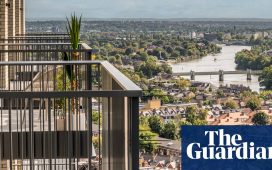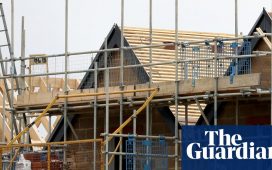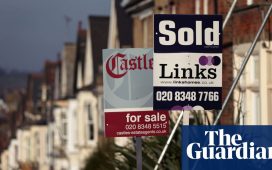Some articles require a lot of work. Others just take a lot of time. Neither approach is a guarantee of value.
In 2015, FT Alphaville tried to make sense of One Hyde Park, a high-rise housing scheme in London’s Knightsbridge. Analysis of Land Registry and local council filings revealed very little about the development. Murky ownership chains and price-redacted sales combined with improbable floorplans and missing title deeds to make the endeavour a monumental waste of your time and ours.
Ever since, “property for sale” alerts for One Hyde Park from the Rightmove portal have been collecting in the author’s email inbox. A new one appeared today:
Its arrival invited two options. We could spend the rest of the week going back through the public data and cold-calling estate agents in an almost certainly futile attempt to figure out whether the seller of the OHP apartment is someone newsworthy (such as, for example, the sanctioned Russian billionaire Alexander Ponomarenko?). Or we could skip all the difficult reporting stuff and put some numbers into a spreadsheet.
Tl;dr here’s the spreadsheet.
The above file adds a decade of Rightmove listings to the original data set and, then as now, it needs disclaimers. Most important, the data is only a partial snapshot of an opaque secondary market. It isn’t clear what share of super-prime instructions are advertised to the public, and not all listings will result in a sale. Quite a few high-tier units have been excluded because they turn up on Rightmove as “price on application”. Some clustering suggests flats are re-advertised as new instructions, and price-reduction alerts don’t always seem to require actual price reductions. Data can only be as trustworthy as the estate agents who provide it.
Remember also that OHP units are not perfectly fungible. Whether a flat is within earshot of the Buddha Bar or on a higher floor among the leaky pipes is unknowable by its listing alone. A buyer might be charged a premium or a discount based on whether their neighbour is Kylie Minogue or Christian Candy. Leaseholds vary. Stamp duty may or may not be required.
This lack of uniformity was among the many problems in our original analysis. But a much bigger data set means flats can be categorised on more than just their advertised room count. We’ve gone with three buckets where, for example, a mid-tier unit nearly always has three bedrooms but might occasionally be a knocked-through two or a pokey four.
Here are the results:
The perhaps obvious headline finding is that OHP’s super-prime valuations are completely uncorrelated with the wider housing market.
Asking prices for mid-tier units have climbed approximately 15 per cent since the opening ceremony in January 2011. The lower and upper tiers (equivalent to one and five bedrooms respectively) have flatlined. Over the same period, Rightmove’s UK nationwide average asking-price index rose 63 per cent to £362,000 and Greater London asking prices were up 80 per cent to £681,823.
Russian sanctions may be having an effect, but it’s subtle. The past 12 months were fairly busy, with 13 flats listed for sale including three upper-tier units. The previous 12 months had 11 units for sale and no upper-tier instructions. On average there are ten units advertised per calendar year, with one listing of a top-tier unit approximately every two years:
We’re still signed up for Rightmove alerts so expect another update of the OHP asking price index in the year 2031, by which time there might be enough data to reach some sort of conclusion. In the meantime, feel free to play with the spreadsheet and report anything interesting in the comment box.
Further reading:
— Super-prime suspects: the game changers in London’s luxury property market (FT)













